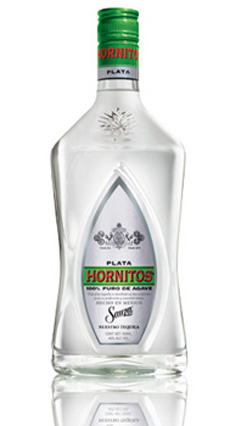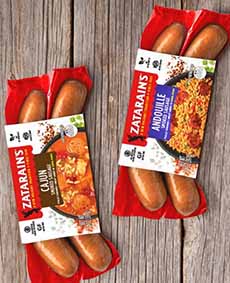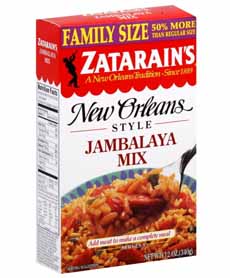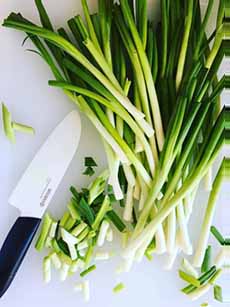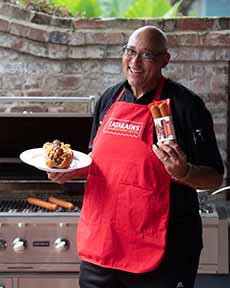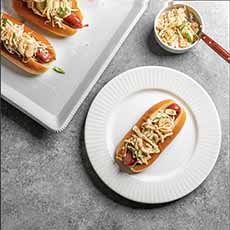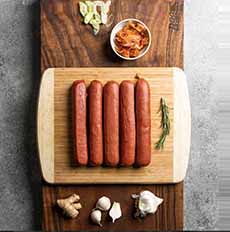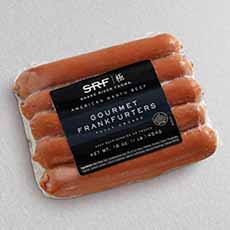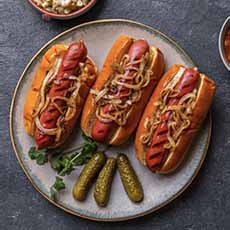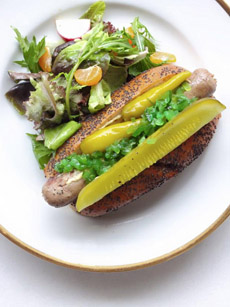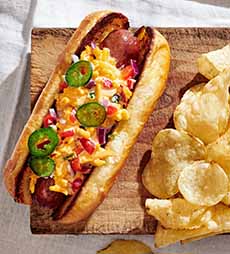|
July 21st is National Junk Food Day. Is this permission to chow down on our favorite junk foods? And what is junk food, anyway? When we drilled down, we were surprised.
We’d always thought of junk food as empty calorie food: candy, chips and other salty snacks, cookies, fast food, foods baked or cooked with bad fats, highly processed foods.
But our favorite desserts? Cake? Ice Cream? Pie? How could these delights be junk? [Sob!] They are! (And 100 years ago, they were known as “cheat food.”)
A professional explanation is that “junk food is unhealthy food that is high in calories from sugar or fat, with little dietary fiber, protein, vitamins, minerals, or other important forms of nutritional value. It is also known as HFSS food (high in fat, salt and sugar) [source].
Wow. That just about wipes out the entire dessert category—high in calories and low in nutritional value—except fruit.
Then we got to thinking: So many popular lunch and dinner foods count on that empty-calorie demon, white flour.
ARE ALL THESE ARE JUNK FOOD?
Vis-à-vis the explanation of junk food, above, all of these foods are at least half “junk.” Are nutritional components the definition of junk versus non junk? Because you can get just as much salt, sugar and fat along with a little nutrition.
Bottled Salad Dressings. Read the label and you’ll go back to plain oil and vinegar, or make your own dressing from plain yogurt and seasonings.
Breakfast Cereals. Many are simply refined grains and sugar.
Burgers. Are fast-food burgers junk food, even though there is protein (albeit typically fat-heavy protein) in-between that empty-calorie roll? What about the burger you make at home?
Butter. It has small amounts of vitamins (A, B12, E, K) but it’s about 80% fat, 12g of fat per tablespoon. Is it junk food?
Coffee. Coffee has cognitive benefits, but what about the two or more sugars per cup, and a two or more ounces of cream?
Fruit Juice. Even 100% quality fruit juice isn’t good for you: “It’s like drinking liquid sugar,” said one source. When a fruit is juiced, all the fiber is removed and what’s mostly left is water and sugar. Check the label and compare it to the sugar in a soft drink.
Grilled Cheese. The high amounts of sodium and fat in American cheese keep it from landing on a list of healthy foods. Most cheeses contain more saturated fat than is good for you. Then, the sandwich gets fried in butter.
Pancakes, Waffles, French Toast. White flour batter or bread, fried in fat with a sugary syrup topping.
Pasta. White flour, tomato sauce (often with added sugar, or a white sauce with cream).
Pizza. Start with an empty-calorie white bread crust. Commercial tomato sauce typically has sugar of HFCS. An ounce of mozzarella has 6 grams of fat. Not to mention the fat and salt in pepperoni
Processed Meats. Bacon, cured meats, ham, hot dogs, jerky, salami, sausage, smoked meats: They have protein, but also lots of saturated fat and salt. With jerky, make that added sugar, too.
Sandwiches. Consider the white bread, whether slices, a roll, wrap, etc. Add fatty meats, cheese, and spreads like mayo.
Sugar Alternatives. Agave nectar, brown rice syrup, honey, maple syrup, molasses: Some have a lower glycemic index, but it’s still sugar.
Toast and Bagels. White bread with fatty (butter, cream cheese) or sugary (jam) toppings.
And on and on.
As we continued to think about it, we got depressed.
No one will deny that Americans eat too much junk food, leading to obesity and other negative health conditions.
The rest of our daily food intake could use a nutrition makeover, too.
We’ve all read it over and over: switch the salty snacks for raw vegetables, the sweet snacks for fresh fruit. Trade the refined carbs for whole grains. Move from fatty meats like beef and pork to lean meats and fish. Ditch the prepared salad dressings for oil and vinegar. Have fruit salad or unsweetened yogurt with fresh fruit for dessert. Avoid sugary drinks, including sweet cocktails…
It’s exhausting. We know right from wrong. But we’re guilty, over and over again. Maybe it’s time to think about the straight-and-narrow during the week and cheat days on the weekends.
Hmmm.
WHEN DOES A FOOD CROSS THE LINE FROM O.K. TO JUNK?
Any nutritionist can give you the answer. He or she can get input on your favorite foods and outline a plan where you can have your favorites—just not every day, and not in the quantity you’ve been eating them.
You can switch chips for popcorn, for example. Just make it plain popcorn—no caramel corn or chocolate drizzle.
So when does a food cross the line from O.K. to junk? When you eat too much of it.
In Andrew F. Smith’s Encyclopedia of Junk Food and Fast Food, published in 2006, junk food is defined as “those commercial products, including candy, bakery goods, ice cream, salty snacks and soft drinks, which have little or no nutritional value but do have plenty of calories, salt, and fats.”
We’re stuck on the word “commercial.” For example: is a Dunkin’ donut or Peperidge Farm cookie junk food, but homemade versions not junk food? A Big Mac and fries junk food, but a homemade cheeseburger and fries not junk?
No matter where they come from, they’re equally unhealthy.
There’s a line between low- or no-nutrition “junk” food and food that may have some more nutrition, but is equally laden with fat, salt and/or sugar.
We’ll continue to contemplate.
And to resist as best we can: We hereby boycott junk food on National Junk Food Day.
As for the rest of the year, well: It’s a battle.
THE HISTORY OF JUNK FOOD
Since mankind evolved to develop “cuisine,” as opposed to sustenance eating to survive, there has been junk food—especially for those with the means to put them on the table.
There were white-flour foods, refined grains, heavy sauces, fried foods, and sugar-based desserts.
But the naming of certain foods as “junk” foods seems to date to a 1948 article from the Ogden, Utah, Standard-Examiner, originally titled, “Dr. Brady’s Health Column: More Junk Than Food.”
The author of the article, William Brady, M.D., comments on a complaint from Mrs. R. D. H. that her daughter “eats more junk than food” [source].
Dr. Brady writes, “What Mrs. H calls ‘junk’ I call cheat food. That is anything made principally of (1) white flour and or (2) refined white sugar or syrup. For example, white bread, crackers, cake, candy, ice cream soda, chocolate malted, sundaes, sweetened carbonated beverages.”
The term “cheat food” can be traced back in newspaper mentions to at least 1916 [source].
But is Mrs. R.D.H. responsible for the term “junk food?”
While there are “junk food” citations starting from at least 1952, it became a popular term in the 1970s, to describe all the fast food and sweets in the American diet [source].
With a look at the rising obesity levels, we must conclude: National Junk Food Day is every day.
|
|

[1] We never thought of our favorite food, ice cream, as junk food; just high-calorie food. But we were in denial: With all that fat and sugar and little nutrition, it is certainly J.F. (photo © Ben And Jerry’s).
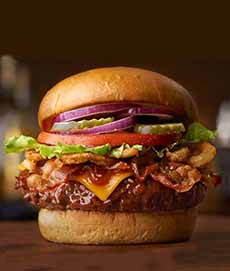
[2] Why is a Big Mac junk food, but this deluxe cheeseburger not J.F. (photo © Smokey Bones)?
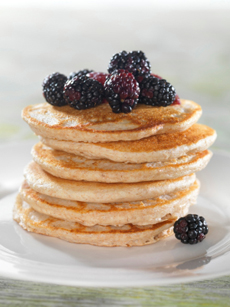
[3] Pancakes were simply “breakfast food.” But check out the white flour batter, fried in saturated fat and topped with sugar syrup. IOHO, it”s J.F. (photo © Laurie Patterson | iStock Photo).

[4] Fettuccine Alfredo: white-flour pasta and a heavy cream sauce? Where’s the nutrition (photo © Cooking Classy).
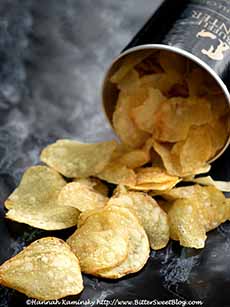
[5] Potato chips? There’s no way to spin this one (photo © Hannah Kaminsky | Bittersweet Blog).
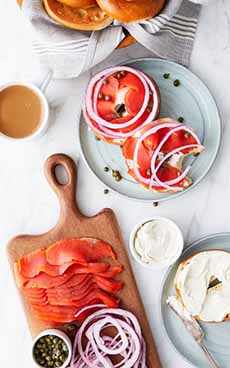
[6] Bagels: white bread. Cream cheese: fat. Smoked salmon: salt. One of our guilty pleasures (photo © Good Eggs).
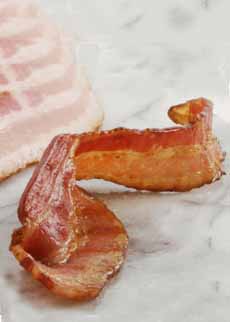
[7] Fat and salt plus nitrates and nitrites: Oops (photo © iGourmet).
|
